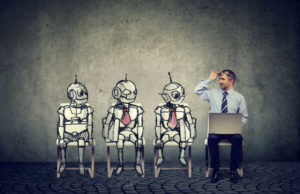
In a world of scarce labor, companies are increasingly relying on robots to perform work that used to be done by humans. The Wall Street Journal’s Christopher Mims reports:
A new wave of robots is arriving—and, in a world short of workers, business leaders are more eager to welcome them than ever.
A combination of hard-pressed employers, technological leaps and improved cost effectiveness has fueled a rapid expansion of the world’s robot army. A half-million industrial robots were installed globally last year, according to data released Thursday by the trade group International Federation of Robotics—an all-time high exceeding the previous record, set in 2018, by 22%.
The total population of industrial robots in the world has now also reached an all-time high, 3.5 million, which exceeds the population of every U.S. city save New York and Los Angeles, according to the federation.
This all amounts to a potentially titanic shift in the way things are made, transported and even consumed, ushering in what some who study the phenomenon call a “roboconomy.” Even more than we do now, in the future we will depend on robots to grow our food, make our goods, care for our elderly and continue to grow the global economy, predict researchers, economists, engineers and business leaders.
Even one-time skeptics have come around. Elon Musk in 2018 tweeted that “humans are underrated” and that excessive automation at Tesla was a mistake. Now that he is running a much bigger company at a time of labor shortfalls, he has jumped on the autonomously driven bandwagon with gusto.
Late last month, the billionaire unveiled an early prototype of a humanoid robot called Optimus that Tesla plans to eventually sell for less than $20,000 and that the company plans to use in car production. “It will, I think, turn the whole notion of what’s an economy on its head, at the point at which you have no shortage of labor,” he said.
There’s every reason to believe the accelerated embrace of robots will continue, given the aging workforces and other demographic shifts that are driving long-term worker shortages all over the world.
China, which established itself as the world’s factory floor on the backs of the world’s biggest human workforce, has been by far the largest adopter of robots in recent years, and was responsible for half of all industrial-robot installations in 2021. There were 62,000 robots installed in its automotive industry last year, double the number of the year prior.
In Japan, one of the world’s most advanced economies, the ratio of robots used in manufacturing to the number of humans in that industry—a measure called “robot density”—grew almost 30% between 2017 and 2020, after being nearly flat for more than a decade, according to data from the International Federation of Robotics and an analysis by the equity research firm Bernstein.
Read more here.




